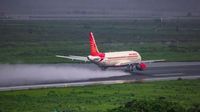India’s aviation sector is facing renewed scrutiny after two incidents involving Boeing 787 Dreamliners have rattled public confidence and prompted urgent calls for action from pilots, regulators, and grieving families. The latest incident, which occurred on October 4, 2025, saw Air India Flight AI117, a 12-year-old Boeing 787-8, experience an unexpected deployment of its emergency power device—the ram air turbine (RAT)—during its final approach to Birmingham Airport in the United Kingdom. The aircraft, en route from Amritsar, India, landed safely, but the episode has reignited deep concerns about the safety and reliability of the Dreamliner fleet.
The RAT, a small propeller-powered turbine that deploys from the underside of an aircraft’s fuselage, is designed to provide emergency power in the event of a catastrophic electrical or engine failure. However, on Flight AI117, all engines were functioning normally, and post-landing assessments found that “all electrical and hydraulic parameters were normal,” according to a statement by Tata Group-owned Air India. The return journey to India was canceled as a precaution, but the aircraft was cleared to resume service the following day on the Birmingham-Delhi route.
This unusual deployment set off alarm bells among aviation professionals. The Federation of Indian Pilots (FIP), representing over 6,000 commercial pilots, immediately called on India’s Directorate General of Civil Aviation (DGCA) to ground and inspect all operational Boeing 787 Dreamliners in the country. “I have never heard of the RAT being deployed automatically without any hydraulic loss, power loss, or failures,” said Charanvir Singh Randhawa, president of the Federation, in comments reported by The New York Times. “It’s a serious concern that warrants a detailed inquiry.”
Randhawa’s concerns are not unfounded. The Dreamliner’s safety has been under a microscope since the deadly crash of Air India Flight 171 in June 2025, which killed all 260 people on board, including 19 on the ground, making it one of India’s worst aviation disasters. That aircraft, also a Boeing 787-8, crashed moments after takeoff from Ahmedabad. A preliminary report by the Aircraft Accident Investigation Bureau (AAIB) found that the plane’s fuel control switches had been moved from the “run” to the “cutoff” position shortly after takeoff, starving both engines of fuel and causing a total loss of power. The RAT deployed as designed, but investigators have yet to determine why the fuel switches were moved.
The circumstances of the June crash have been further complicated by controversy over the official investigation. The father of the deceased pilot, Captain Sumeet Sabharwal, complained to the FIP that investigators had visited his home and implied that his son had deliberately cut fuel to the engines. In a letter, Pushkar Raj Sabharwal accused the AAIB of “selective” releases of information that led to speculation about his late son’s actions and requested an independent investigation. The FIP echoed these concerns, stating that the interaction “confirmed his fear of a deliberate attempt to shift blame onto a deceased pilot.”
India’s Civil Aviation Minister Ram Mohan Naidu responded to the controversy in a televised interview, denying any manipulation or misconduct in the investigation. “There is no manipulation or there is no dirty business happening in the investigation,” Naidu told broadcaster India Today. “It is a very clean and very thorough process that we are following according to the rules that have been set up, so we are going to ensure that commitment is maintained.”
The Supreme Court of India has now asked the government to respond to a plea seeking an independent investigation into the crash, reflecting the growing public demand for transparency and accountability. Meanwhile, Reuters reported that India has sought more information from Boeing regarding the recent RAT deployment on Flight AI117, highlighting the urgency with which authorities are treating these incidents.
For Air India, the stakes could hardly be higher. In both the June crash and the October near-miss, the airline has emphasized its commitment to safety and protocol. Following the Birmingham incident, Air India stated that a report had been provided to the industry regulator and that “the safety of all passengers and crew remains our foremost priority.”
Yet, as the FIP’s call for a fleet-wide inspection demonstrates, confidence among pilots is shaken. The Federation’s president, Randhawa, whose career spans five decades, underscored just how rare and troubling the Birmingham incident was. “I’d never heard of the RAT system being deployed even when there are no problems in the engines, hydraulics or electrical systems,” he told Associated Press. The FIP’s urgent letter to the DGCA has intensified pressure on regulators to act swiftly and decisively.
The technical details of the RAT’s deployment are not lost on aviation experts. The device is only supposed to activate in dire circumstances—typically when all other sources of electrical or hydraulic power have failed. That it deployed while all systems were reportedly normal raises difficult questions about potential hidden electrical faults or software glitches within the Dreamliner’s complex systems.
For Boeing, these developments come at a sensitive time. The company has faced a series of high-profile technical and safety challenges in recent years, including the global grounding of its 737 MAX fleet. While U.S. regulators have previously cleared the Dreamliner for continued operation following production changes, the recent incidents in India could prompt renewed scrutiny from international aviation authorities.
Passengers, for their part, have been left anxious and searching for reassurance. Social media lit up with questions following the Birmingham incident, with many travelers expressing concern about flying on Boeing 787s. For families affected by the June crash, the pain is compounded by lingering doubts and the slow pace of official findings.
As for the investigation into the June disaster, the AAIB’s preliminary report confirmed that the RAT deployed as expected after the engines lost power, but the key question—why the fuel switches were moved to cutoff—remains unresolved. A source briefed on U.S. officials’ early assessment told Reuters that cockpit recordings supported the view that Captain Sabharwal had cut the flow of fuel to the engines. However, supporters of the late pilot have pushed back, calling for a more thorough and independent review of the evidence.
India’s aviation authorities now find themselves at a crossroads. The outcome of ongoing investigations, and the response to the FIP’s demands for a fleet-wide inspection, will play a critical role in restoring public trust. For the families of victims, the pilots who fly these planes, and the millions who rely on safe air travel, the stakes could hardly be higher.
As the world watches, the future of the Boeing 787 Dreamliner in India—and perhaps beyond—may well hinge on the answers that emerge from these investigations and the resolve of those demanding the highest standards of safety and accountability.


